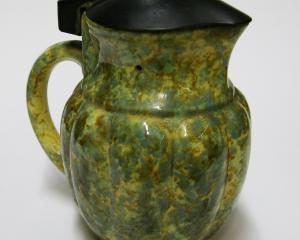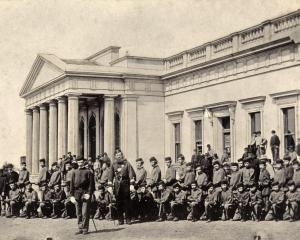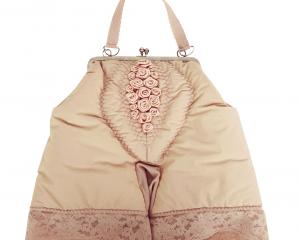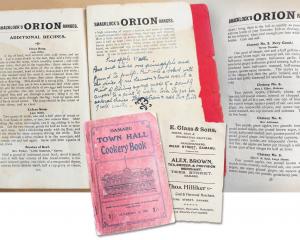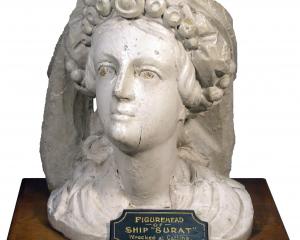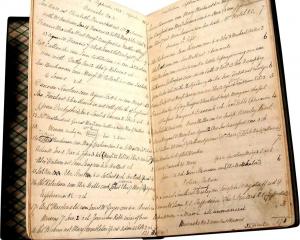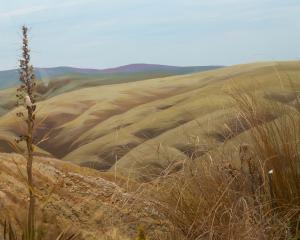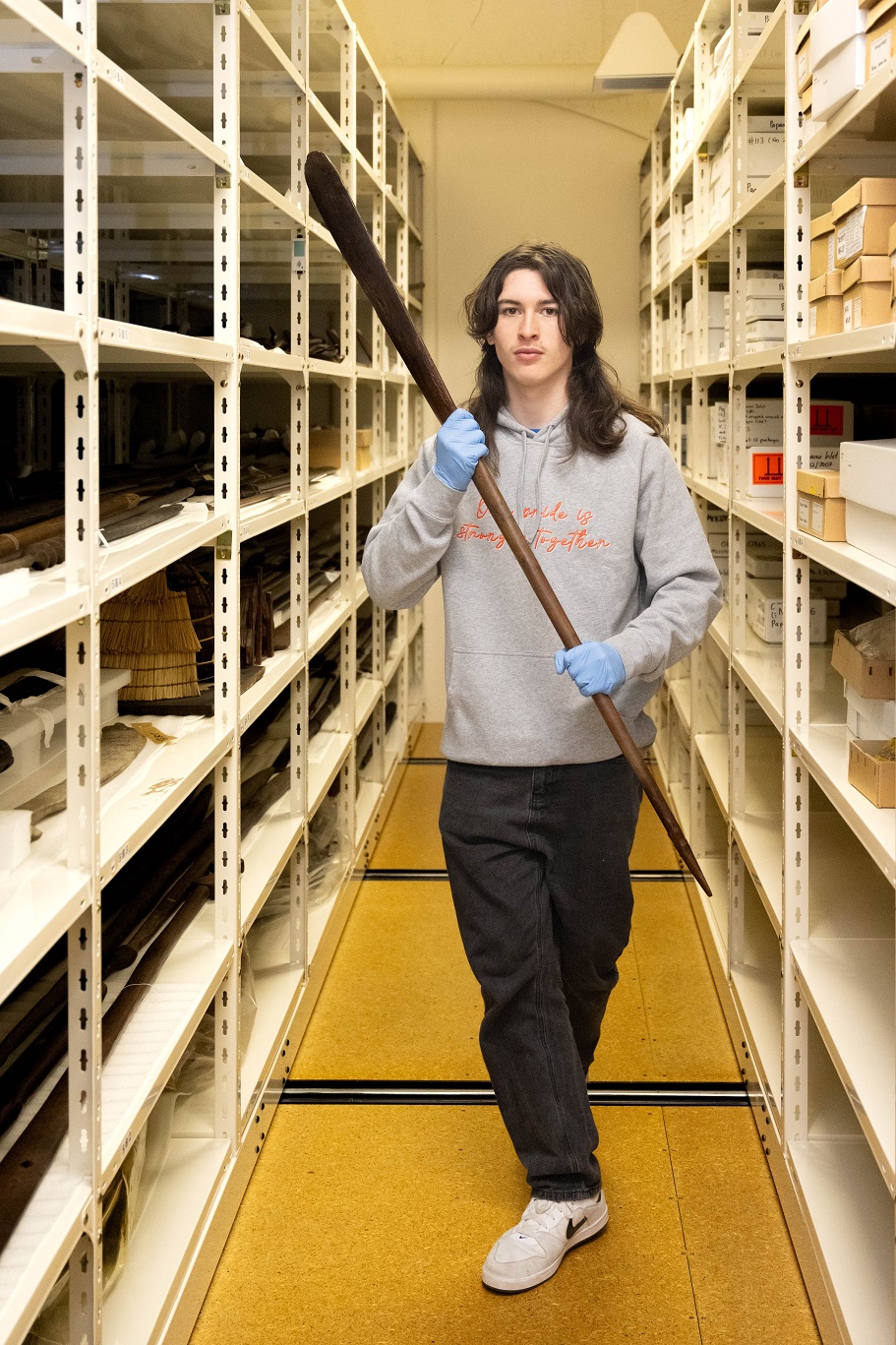
Being the Te Rūnanga o Ngāi Tahu intern for Tūhura Otago Museum has given me many opportunities. A special one has been researching rākau whawhai (Māori weapons). As someone practising mau rākau (a weapons-based martial art), my research has focused especially on experiencing the balance and feel of these rākau when held.
In his book Comparatively Speaking, H.D. Skinner, a past director of the museum, discusses differences in patu (short clubs), how different types were used, and how the shapes of handles and carvings varied among iwi. This sparked a question for me — are there differences in rākau whawhai design and use between Kāi Tahu and other iwi?

Raised in a Māori home with te reo Māori as my first language, I have always had a big interest in the way my ancestors lived. Over the last couple of years, I have been doing mau rākau with Te Whare Tū Tauā o Aotearoa, a school that uses a style that originated with Ngāti Kahungunu. Since there isn’t a traditional Kāi Tahu mau rākau style that has survived, I have long wondered what it looked like.
Traditional weaponry also features in some of the categories of haka that I have learned as a part of He Waka Kōtuia, our local kapa haka. While haka are often used to welcome or celebrate someone (e.g., haka pōwhiri or haka whakamihi), they can also be an angry response to someone or something (e.g., manawa wera). Haka whakatū waewae and haka peruperu were originally performed before a battle to show strength and to intimidate opponents, and toa (warriors) would often use rākau whawhai — the long wooden weapons of our tūpuna — to punctuate their movements.
Of the many different two-handed rākau whawhai, taiaha are the best known and recognised by their carved heads. Pouwhenua, another variety of long fighting staff, have a sharp, spear-like point instead of a head, while tewhatewha have an axe-shaped head — upoko hau — at one end and a spear-like point to the other. Koikoi, in contrast, have spear-like points on both ends. Of all of these, the pouwhenua is the most important rākau whawhai as it was the first to be created. In stories from other iwi, it was used during a battle between Tūmataueka and his brother Tāwhirimātea that led to the creation of the taiaha.
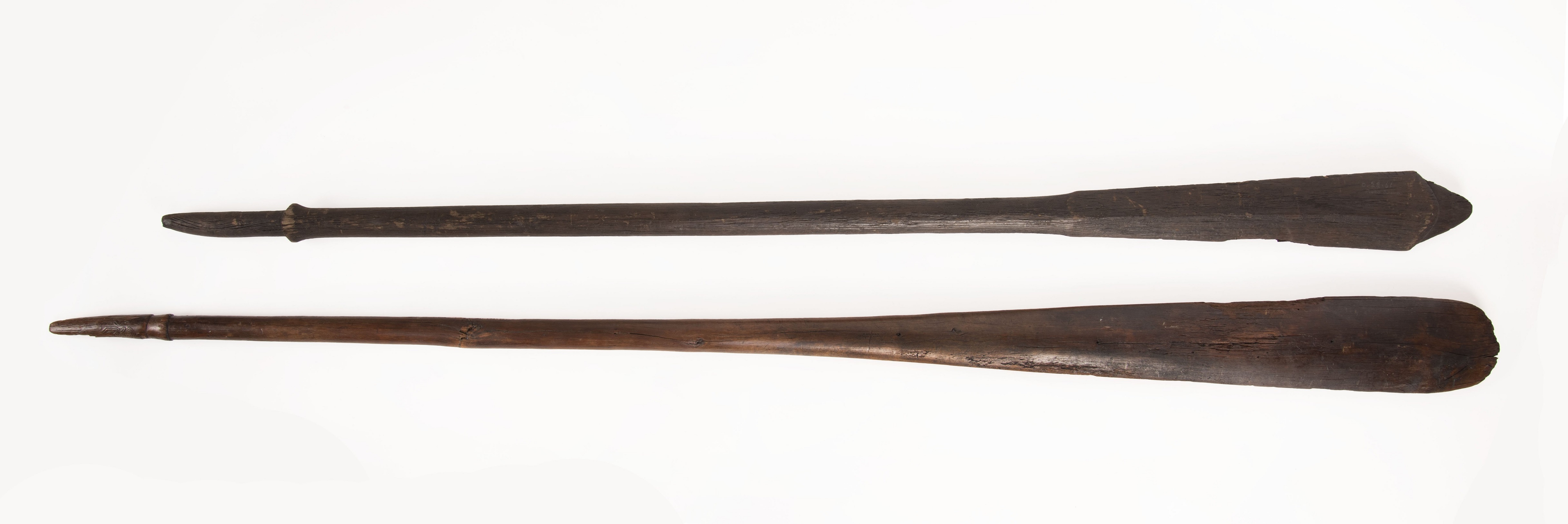
Looking at the two pouwhenua from a handling perspective, I also noticed differences in the weight distribution. The one from Central Otago is very heavy in the blade, meaning the point of balance lies more towards the ate end, at least with the natural grip and the way I held it, and it is hard to manoeuvre. On the other hand, the pouwhenua from Piako has a more even balance and is easier to move around the same way you would wield a taiaha.
It is hard to tell what iwi variations there are based on only two pouwhenua. Others from Waikato or Central Otago may be different from those I held. From handling these rākau I felt that the Piako pouwhenua was more practical and would likely be effective in battle. The uneven balance of the Central Otago pouwhenua suggests to me that it perhaps had status or ceremonial aspects to it, rather than being only intended for battle. We know that in the late 1800s there was a shift in the design of mere (short, one-handed clubs made of pounamu) from fighting weapons to symbols of mana — this is evident from the balance when you hold them. Perhaps the Central Otago pouwhenua underwent the same shift. If so, this shows the importance of holding and feeling taoka as part of the research process.
After studying these rākau further, I realised they had more in common than first meets the eye: both feature the ‘‘eyebrow’’ or ‘‘face’’ motif. This is a symbolic design that H.D. Skinner recognised in other wood and bone carving. The Piako pouwhenua shows this motif in the blade, where it has curved eyebrows and a long nose ridge and culminates in a protruding tongue. I saw this same design in a whalebone patu from Rēkohu (Chatham Islands) that had carvings like curved eyebrows, a long nose ridge and a triangular tongue shape at the flared end. We can see similarities again in a rākau whawhai from Kōpuwai (Old Man Range), one of the longest two-handed weapons known. It also shares this ‘‘eyebrow’’ motif. Even though there are clear differences in their size and weight, the motif shows that all these taoka shared a common symbolism, reminding us that while there are differences between iwi, there are also commonalities across the country.

